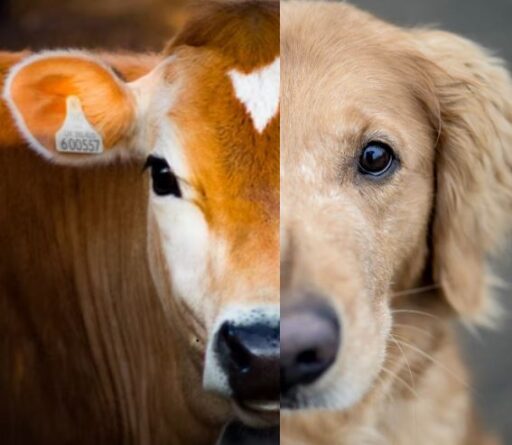As some people question whether shrimp even feel pain (they do), you might wonder – is shrimp vegan? No, shrimp not vegan because they are sentient creatures. But the problems with shrimp extend far beyond that. Many vegans don’t eat shrimp for five other significant reasons that you may never have heard.
- Farmed or wild-caught: both have consequences
- 1. Shrimp farms permanently destroy mangroves, pollute water, decrease carbon storage and increase greenhouse gas emissions.
- 2. Biodiversity Loss
- 3. Antimicrobial resistance (AMR)
- 4. Human Rights Concerns
- 5. Health Risks of Shrimp
- Deceptive Labeling
- Is shrimp vegan? No – and there’s a lot more to it than that
Farmed or wild-caught: both have consequences
Most people don’t have any idea what it takes to get shrimp to their plates, or what’s in it. Regardless of whether they are wild-caught or farmed, the process of raising or catching shrimp for human consumption has devastating environmental and human rights consequences.
Both shrimp aquaculture and wild-caught shrimp have a deservedly grim reputation. Farmed shrimp are linked to slave labor, mangrove destruction, air and water pollution, and the spread of antimicrobial resistant bacteria (AMR) that contributes to the antibiotic resistance crisis. Wild-caught shrimp are connected with slave labor and destruction of the ocean ecosystem via trawling nets that kill marine animal and plant life. Additionally, shrimp is often mislabeled and can pose health risks.
1. Shrimp farms permanently destroy mangroves, pollute water, decrease carbon storage and increase greenhouse gas emissions.
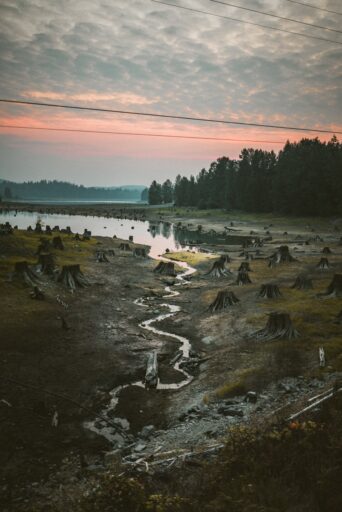
Shrimp farms have caused at least 35% of the overall loss of mangrove trees. In Southeast Asia, shrimp farming is responsible for 30% of mangrove deforestation and coastal land use change.
An intensive shrimp farm generally lasts five to ten years, while a less intensive system lasts seven to fifteen. Both initially have high yields but are followed by a dramatic collapse due to bacterial contamination and viral disease. Abandoned farms rarely regenerate and are not rehabilitated back into mangrove ecosystems or converted for other uses. This is because damage to the soil and infrastructure prevents mangroves from recovering and can result in permanently impaired ecosystem function, even after the shrimp pond is no longer used.
A 2021 study in Frontiers for Global Change revealed the following impacts from twenty years of shrimp farming: pollution from the shrimp ponds, reduced productivity, reduced ability to store carbon, decreased resilience to environmental stressors, worsened ability to filter estuaries, and decreased biodiversity of marine species.
A 2019 study in Estuarine, Coastal and Shelf Science found that shrimp farms increase CO2 emissions in mangrove soil. Additionally, mangroves impacted by shrimp farms may release large amounts of the potent greenhouse gas nitrous oxide.
2. Biodiversity Loss
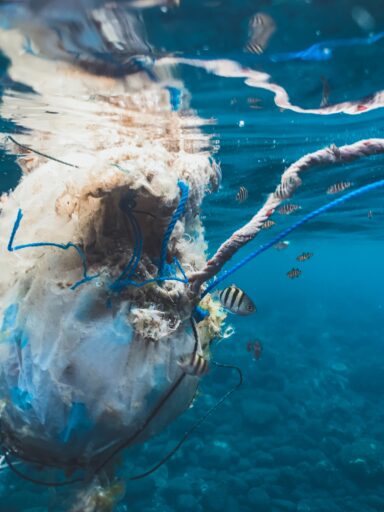
For every pound of shrimp trawled from the ocean, up to 20 pounds of other marine life is caught and killed. A two-year long 2020 study in the Arabian Gulf found that shrimp trawling led to the bycatch of 104 fish and shellfish species. It also poses a serious threat to local sea turtle populations, as an estimated 1492-2,018 sea turtles were caught as bycatch.
In the mangrove forests of Asia and Australia, this also endangers the unique wildlife, nearly half of which are already threatened with extinction. The shrimp themselves are also at risk of extinction, as a study conducted by the International Union for Conservation of Nature found that at least 28 percent of the world’s freshwater shrimp species are threatened with extinction.
3. Antimicrobial resistance (AMR)
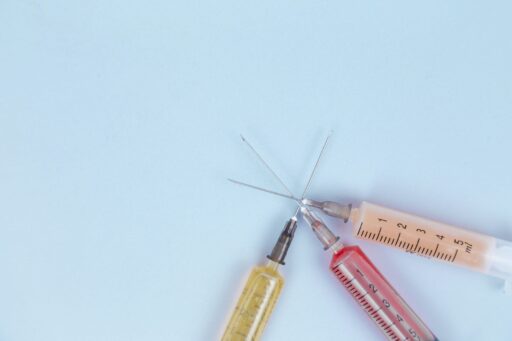
A 2019 study from Reviews in Aquaculture concluded that the production of shrimp poses a high risk of disseminating antimicrobial resistance. Shrimp farms are pack in shrimp, bringing along high bacterial densities, increased risk of infection, high levels of disease, widespread use of chemicals, release of untreated waste into the local environment and high levels of unprotected human contact with water and animals.
One risk factor especially pertinent to shrimp farming is that human and livestock waste (which is filled with antibiotics) is used to fertilize ponds to promote the growth of algae for shrimp to eat. (To emphasize: Shrimp grow in human and livestock feces.) This is a common practice which many governments support as being more environmentally and economically sustainable.
However, this increases the risk of human and zoonotic pathogens in the shrimp pond. The antibiotic-filled sediment from these ponds is then used to fertilize crops for humans and animals to eat. As a result, these systems have been shown to have high levels of antimicrobial resistant bacteria (AMR). One study even showed an increase in AMR of 1-5% to 80-100% in the span of two months.
Researchers have found 162 types of bacteria in shrimp with antibiotic resistance. The ponds where farmed shrimp are kept are dosed heavily with chemicals like urea, superphosphate, and diesel. On top of that, they receive pesticides, antibiotics, sodium tripolyphosphate, borax and caustic soda.
4. Human Rights Concerns
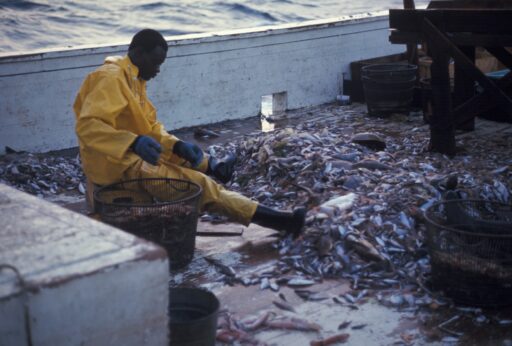
Slave labor practices in the shrimp industry
Much shrimp and other seafood is imported from Thailand, where the industry relies on migrant and child slave labor. Slave labor is used to harvest fish that supply the global market, and child and migrant labor is used in processing plants. Workers on shrimp farms have reported being forced to work for 16 hours at a time peeling shrimp, threatened with being beaten.
Wild-caught shrimp often depends on slave labor, too. A 2018 article in The Guardian reported that forced labor has happened on boats, where “workers were trapped in jobs they couldn’t leave, suffered from physical abuse, lack of food, long hours, and awful working conditions.”
Shrimp farms are dangerous to people in coastal villages
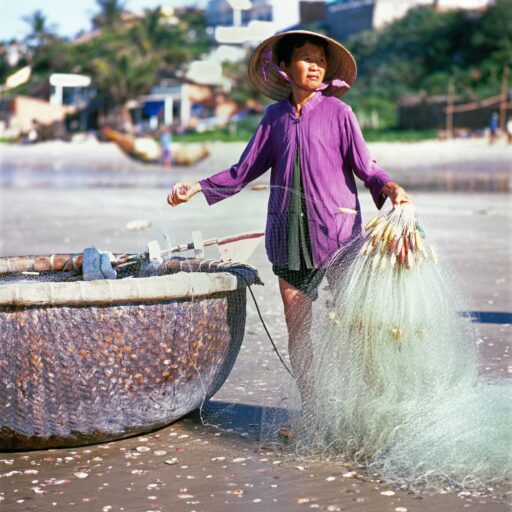
Beyond the direct human rights abuses through slave labor, the shrimp industry is a deadly threat to locals who live in coastal villages near mangroves. Without the mangroves, people die. Mangroves protect coastal villages in Southeast Asia from flooding from tropical storms.
Research from Duke University found “a clear inverse relationship between the number of deaths per village and the width of the mangroves located between those villages and the coast… villages with wider mangroves suffered significantly fewer deaths than ones with narrower or no mangroves.” They added, “This is a measure of the life-saving impact of the mangroves that remained in 1999 . . . they cut the death toll by about two-thirds.”
5. Health Risks of Shrimp

Finally, the health risks of consuming shrimp are not to be ignored. Most shrimp is not inspected by the FDA. Imported shrimp has often been shown to have high concentrations of heavy metals, especially iron. Microplastics found in seafood are also linked to cancer development. Furthermore, with 179 mg of cholesterol in just three ounces of shrimp, it is quite high in cholesterol.
When it comes to your health, keep in mind that shrimp are bottom dwellers. Wild shrimp feed on parasites, decaying worms, algae, fish, snails and even other dead shrimp. Farmed shrimp are fed fishmeal, krill, algae and even shrimp byproducts such as shrimp heads. As we have seen, farmed fish in particular grow in repulsive environments filled with pathogens, feces and chemicals.
Deceptive Labeling
Even if you think you’re buying local shrimp in an effort to avoid some of these issues, shrimp is often mislabeled. For instance, sixty vendors across North Carolina sold shrimp as “local.” Yet 34% was found to be mislabeled, both in coastal and inland counties. One third of the mislabeled shrimp was actually whiteleg shrimp, an imported and globally farmed species native to the eastern Pacific, not found near North Carolina.
Domestic, wild-caught shrimp accounts for less than 10% of all shrimp eaten in the US. In all likelihood, the shrimp on your plate is part of the 90% of farmed shrimp or imported from abroad, which is rife with human rights abuses and environmental degradation.
Is shrimp vegan? No – and there’s a lot more to it than that
So, the next time someone asks you, “Is shrimp vegan?”, you can confidently answer, “No, because they are sentient – but there’s a lot more to it than that!” Both farmed and wild caught shrimp are tangled up in a damaging web of problems, including mangrove destruction, air and water pollution, biodiversity loss, antimicrobial resistance, and human rights concerns, including slave labor and endangering coastal communities. They also pose health risks and are subject to misleading labeling. That’s a lot of compelling reasons to consider opting for a vegan shrimp brand or alternative recipes!

